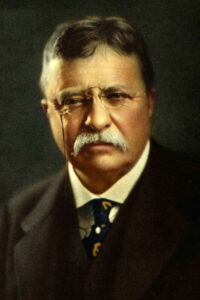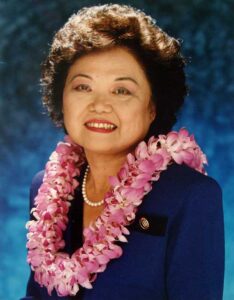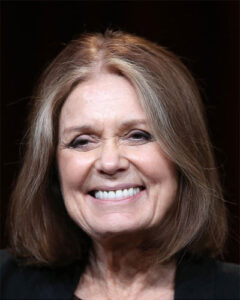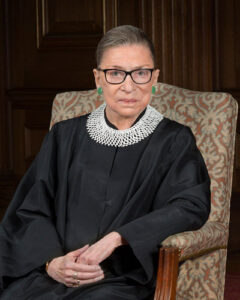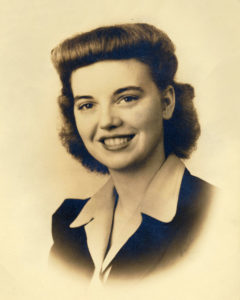“I ask no favors for my sex. I surrender not our claim to equality. All I ask of our brethren is that they will take their feet from our necks and permit us to stand upright on that ground which God designed us to occupy.” – Sarah Grimkés, abolitionist, feminist, and writer (1792-1873)
One hundred and seventy-five years ago today, the long march toward women’s suffrage began. Three hundred men and women convened in Seneca Falls, New York to discuss the social, civil, and religious rights of women. There was a lot about which to talk.
In 1848, women were subject to the guardianship of their fathers (if unmarried) or husbands (if married). They could not own property, hold bank account, sign contracts, retain their scant wages, or receive an inheritance. They were denied educational opportunities. If they divorced their spouses, their husbands assumed full custody of the children irrespective of his quality of character or interest. Women could not serve on juries, hold public or ecclesial office, or vote. Nonetheless, they were liable for payment of taxes, leading to a sustained experience of “taxation without representation.”
Under Elizabeth Cady Stanton’s leadership, the assembly listened to addresses from passionate speakers, voted on resolutions, and crafted a Declaration of Sentiments patterned after the Declaration of Independence. While provisions related to voting rights were hotly debated, Stanton held firm on their inclusion, arguing that a woman’s participation in democratic elections would prove the linchpin to securing other reform. She prevailed, and 100 delegates affixed their signatures to the document.
From this initial spark, the smoldering embers of a movement began to dot the countryside until the outbreak of civil war in 1861. As most of the activists were staunch abolitionists, they focused their energies on securing freedom for slaves. They were bitterly disappointed at war’s end to see the passage of constitutional amendments granting suffrage to African American males yet continuing to deny that right for women.
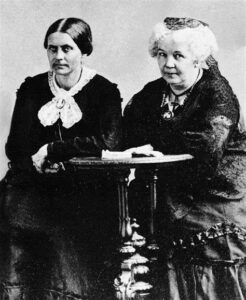
Susan B. Anthony and Elizabeth Cady Stanton
In 1869, Stanton and Susan B. Anthony formed the all-female National Woman Suffrage Association to press for voting rights on a federal level. Lucy Stone founded the American Woman Suffrage Association which welcome male advocates as members and pressed for voting rights on a state-be-state basis. Both cultivated tireless efforts by the membership and leveraged print media, rallies, and lobbying to press for social reform. Yet, on the fiftieth anniversary of the Seneca Falls convention, very little progress could be reported. Only Wyoming (1869), Colorado (1893), Utah (1896), and Idaho (1896) had full female suffrage. Women’s rights improved modestly. By 1900, three-quarters of states let women own property, two-thirds let them retain their wages, and a few public universities admitted exceptional women.
After a lull during the first decade of the 20th century, Washington, California, Kansas, Arizona, and Oregon granted voting rights for women. A new generation of women came to the fore to take up the mantle of women’s suffrage. Anna Howard Shaw and Carrie Chapman Catt brought forth the union of the two major suffrage associations to form the National American Woman Suffrage Association (NAWSA) with the dual focus of federal and state activism. Harriot Stanton Blatch formed the Equality League of Self-Supporting Women and launched publicity campaigns to raise awareness and support. Alice Paul orchestrated a march on the U.S. capital days before Woodrow Wilson’s inauguration in 1913. It drew 5000-8000 participants and 100,000-300,000 spectators and some notably bad behavior (e.g., tripping, slapping, spitting, heckling, cussing) from men who opposed to movement. One month later, 531 women marched the route in reverse to deliver petitions to each member of Congress.
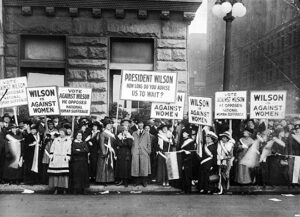 Wilson declared support for women’s suffrage in 1916 but did very little to support it. That same year, Paul formed the National Woman’s Party and organized daily pickets at the White House with signs that read: “How Long Must Woman Wait for Liberty?” and “Mr. President, What Will You Do for Woman Suffrage?” Over 1,000 protesters gathered at the White House for his second inauguration. They decried Wilson’s call for global democracy in the wake of World War I while refusing to support full democracy at home.
Wilson declared support for women’s suffrage in 1916 but did very little to support it. That same year, Paul formed the National Woman’s Party and organized daily pickets at the White House with signs that read: “How Long Must Woman Wait for Liberty?” and “Mr. President, What Will You Do for Woman Suffrage?” Over 1,000 protesters gathered at the White House for his second inauguration. They decried Wilson’s call for global democracy in the wake of World War I while refusing to support full democracy at home.
The administration’s response to these unfailingly peaceful protests was to place the agitators in jail, violating their right to free speech and assembly. Conditions in prison were deplorable, and the women were mistreated by the guards and superintendents. They suffered mightily physically, mentally, and emotionally. Not willing to conceded defeat, they organized hunger strikes and let their plight be known outside the jailhouse walls. Suffice it to say, the activists were a real nightmare for Woodrow Wilson.
On January 9, 1918, President Wilson called for the enactment of women’s suffrage during his State of the Union address to Congress. The House passed the constitutional amendment 274-136 shortly thereafter; the Senate stalled the vote until October and defeated the bill. Alice Paul organized another march that December and ramped up the protests. When the 66th Congress was sworn in on May 19, 1919, both chambers took up the vote for women’s suffrage and passed the legislation.
Because a constitutional amendment requires ratification by two-thirds of the states, the battleground moved from the federal to state houses. By Spring 1920, 35 states voted for the amendment and 8 against. Of the remaining holdouts, Tennessee seemed the most likely to secure the final affirmative vote. The Tennessee Senate supported the amendment with a 25 to 4 vote. The initial vote in the State House came in at a dead heat: 48 to 48. After intense debate, Harry Burn, a 24-year representative from East Tennessee, changed his vote to the affirmative citing his moral rectitude and the influence of his mother.
It took seventy-two years, 480 campaigns, 56 state referendums, 47 attempts to add suffrage to state constitutions, and 19 biannual campaigns to 19 Congresses to walked the distance between the 1948 Seneca Falls convention to the ratification of the 19th Amendment, granting women the right to vote. As Carrie Chapman Catt said:
“Young suffragettes who helped forge the last links of that chain were not born when it began. Old suffragettes who forged the first links were dead when it ended.”
Charlotte Woodward Pierce was the lone signatory of the original Declaration of Sentiment to witness the ratification of the 19th Amendment. She was 91 years old when first eligible to vote but was too sick to go to the polls. Though a devoted suffragette her entire life, she never was able to cast a vote.
We’ve made progress in the last 100 years with a gaggle of social, legislative, and economic reform. Pew Research reports that women earn 82 cents for every dollar earned by men, up from 65 cents in 1982. Four out of nine Supreme Court Justices are women. We have our first female Vice President, a record 128 serving in the House of Representatives (29% of the chamber’s total), and 25 serving in the Senate (25% of the chamber’s total). That’s good, but not great considering that slightly more than half of the U.S. population is female. But here’s the rub: Only 68% of women eligible to vote actually exercised that right in the last Presidential election. Moreover, only three-quarters of eligible women are registered to vote.
The country has issues that threaten our future security, livelihoods, and cohesion. Big money interests exercise a disproportionate influence in the affairs of State. But for democracy to work, it asks all of us to take our responsibilities as citizens seriously – to become informed participants in democracy and exercise our right to vote.
Please take time to separate the wheat from the chaff in media reports to discern the truth. Understand the issues put before you. Do some research on candidates for office – their character, skills, experience, and positions on policy matters. And then vote your conscience at every election.
If this post has piqued your interest, consider reading Votes for Women: American Suffragists and the Battle for the Ballot by Winifred Conkling.
 In the wake of several weeks of declining health, my dear friend Bakie Ward left her earthly body this morning. My heart is breaking.
In the wake of several weeks of declining health, my dear friend Bakie Ward left her earthly body this morning. My heart is breaking. She loved her family and reveled in all the moments they shared together.
She loved her family and reveled in all the moments they shared together.
